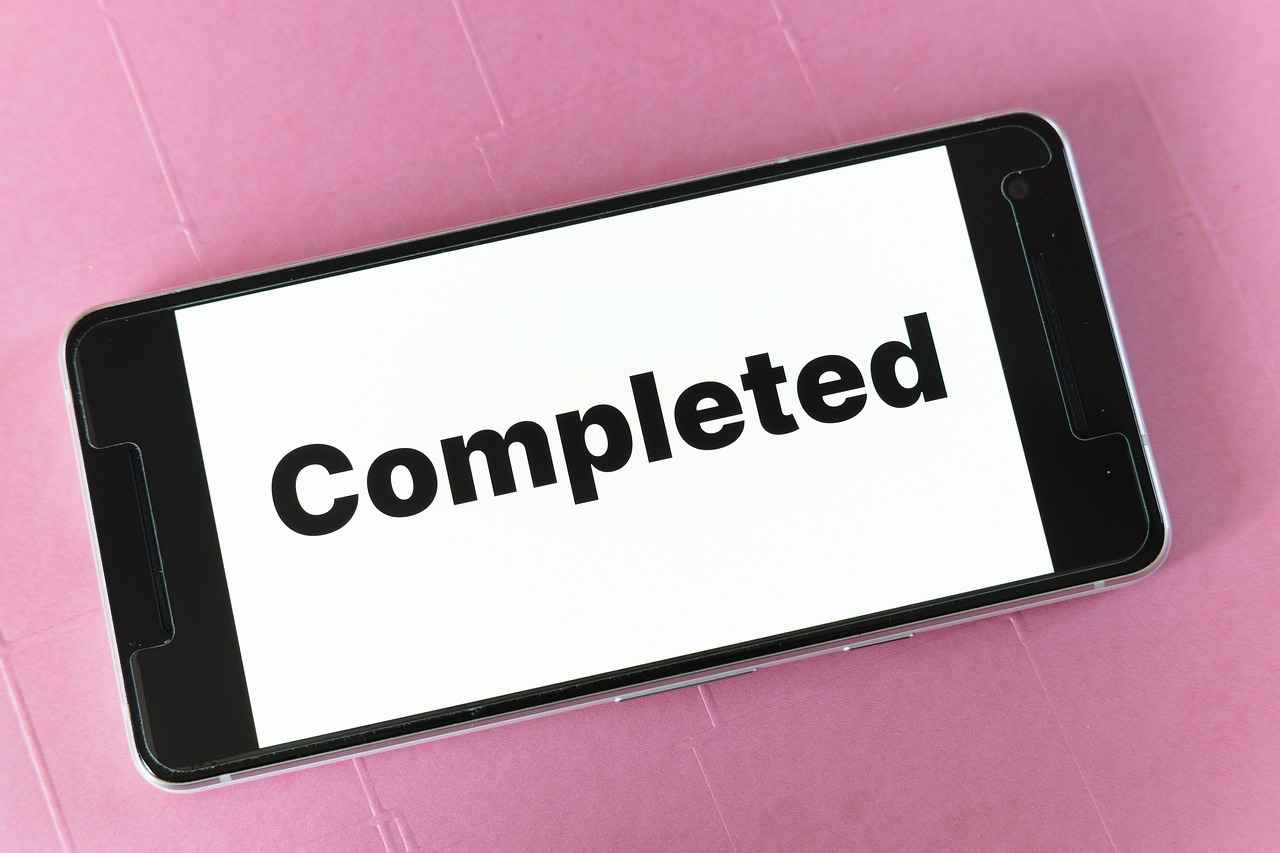This article explores effective strategies for managing a classroom using Blooket, a popular educational game platform. We will focus on balancing engagement and discipline to enhance student learning.
Understanding Blooket in the Classroom
Blooket is an innovative platform that allows teachers to create interactive games for students. By integrating this tool into classroom management, educators can foster a more engaging and dynamic learning environment. Understanding its functionalities is key to leveraging its potential effectively. Teachers can create customized quizzes and games that align with their curriculum, making learning both fun and educational.
Benefits of Using Blooket for Engagement
Blooket offers numerous benefits, such as increased student engagement and motivation. The platform transforms traditional learning into an interactive experience, which can significantly improve classroom dynamics. Students are more likely to participate actively when lessons are gamified, leading to a more vibrant classroom atmosphere.
- Enhancing Student Participation: Active participation is crucial for effective learning. Blooket’s game-based approach encourages students to engage more actively in lessons, fostering a lively classroom environment.
- Interactive Learning Experiences: Interactive games create memorable learning experiences. Students often retain information better when it is presented in a fun and engaging format, such as Blooket.
- Building a Collaborative Atmosphere: Blooket promotes teamwork and collaboration. Students often work together in teams, which helps build relationships and a sense of community in the classroom.
Addressing Diverse Learning Styles
Blooket caters to various learning styles, making it an effective tool for diverse classrooms. This adaptability helps ensure that all students can thrive, as it allows for differentiated instruction that meets individual needs.
Implementing Blooket in Classroom Management
Integrating Blooket into classroom management requires thoughtful planning. Educators should establish clear expectations and guidelines to ensure that gameplay aligns with learning objectives. Setting these rules helps maintain discipline while allowing students to enjoy the learning process.
- Setting Clear Expectations: Establishing clear rules and guidelines is essential when using Blooket. This ensures that students understand the objectives and behavioral expectations during gameplay.
- Monitoring Student Behavior: Teachers must monitor student behavior during Blooket sessions. By keeping an eye on interactions, educators can address any issues that arise promptly.
Balancing Fun with Discipline
Striking a balance between fun and discipline is vital for effective classroom management. Incorporating a reward system can motivate students while maintaining discipline. Recognizing positive behavior encourages a respectful and focused learning environment. Additionally, establishing consequences for disruptive behavior is crucial to uphold classroom standards.
- Creating a Reward System: A reward system can motivate students while maintaining discipline. Recognizing positive behavior encourages a respectful and focused learning environment.
- Implementing Consequences for Disruptions: Establishing consequences for disruptive behavior is crucial. This ensures that all students understand the importance of maintaining a positive atmosphere.
Evaluating the Effectiveness of Blooket
Regular evaluation of Blooket’s effectiveness in the classroom is necessary. Gathering student feedback through surveys and discussions can provide insights into how students perceive the platform. Analyzing academic performance before and after implementing Blooket helps gauge its effectiveness and informs future instructional strategies.
- Gathering Student Feedback: Student feedback is invaluable for understanding the effectiveness of Blooket. Surveys and discussions can provide insights into how students perceive the platform.
- Analyzing Academic Performance: Tracking academic performance before and after implementing Blooket can help gauge its effectiveness. This analysis can inform future instructional strategies.
Best Practices for Using Blooket
Implementing best practices ensures that Blooket is used effectively in the classroom. Customizing game content to fit curriculum objectives enhances relevance. This customization ensures that Blooket aligns with learning goals and engages students meaningfully. Additionally, encouraging healthy competition can motivate students while fostering a supportive environment.
- Customizing Game Content: Tailoring game content to fit curriculum objectives enhances relevance. Customization ensures that Blooket aligns with learning goals and engages students meaningfully.
- Encouraging Healthy Competition: Healthy competition can motivate students, but it’s essential to foster a supportive environment. This approach encourages competition without promoting negativity.
Future Trends in Classroom Management with Blooket
As educational technology evolves, Blooket continues to adapt. The integration of AI may lead to more personalized learning experiences in Blooket, further enhancing engagement and effectiveness in the classroom. Future updates may include new features that enhance gameplay, providing even more opportunities for student engagement and learning.

Understanding Blooket in the Classroom
Blooket is an innovative educational platform that empowers teachers to create interactive games designed to enhance student learning. By integrating gamification into the classroom, Blooket transforms traditional learning methods into engaging experiences. This platform enables educators to craft customized quizzes, flashcards, and various game modes that can captivate students’ attention while promoting knowledge retention.
One of the key functionalities of Blooket is its ability to foster student engagement. When students participate in games, they are more likely to be motivated and excited about learning. This excitement can lead to improved academic performance and a more dynamic classroom environment. Teachers can create games that align with their curriculum, ensuring that learning objectives are met while students enjoy the process.
In addition to enhancing engagement, Blooket also provides a unique opportunity for collaborative learning. Many of the games are designed for team play, encouraging students to work together to solve problems and answer questions. This collaborative approach not only builds camaraderie among students but also develops essential skills such as communication and teamwork, which are critical in today’s educational landscape.
Another significant advantage of Blooket is its adaptability to various learning styles. The platform caters to visual, auditory, and kinesthetic learners by incorporating different types of questions and game formats. This versatility ensures that all students can participate and benefit from the learning experience, regardless of their preferred learning style. Teachers can easily adjust game content to match the diverse needs of their classroom, making Blooket a valuable tool for inclusive education.
Furthermore, Blooket’s user-friendly interface allows teachers to quickly set up games and monitor student progress. Educators can track which students are performing well and identify those who may need additional support. This capability not only aids in classroom management but also helps teachers tailor their instruction to meet individual student needs.
In summary, understanding Blooket’s functionalities is essential for teachers aiming to leverage its potential in classroom management. By utilizing this platform, educators can create an engaging, collaborative, and adaptable learning environment that fosters student success. As technology continues to evolve, platforms like Blooket will play an increasingly vital role in shaping the future of education.

Benefits of Using Blooket for Engagement
Blooket has emerged as a transformative tool in the educational landscape, offering a unique approach to learning that captures students’ attention and fosters a dynamic classroom environment. By integrating game-based learning into the curriculum, Blooket not only enhances student engagement but also cultivates a sense of motivation that is often difficult to achieve through traditional teaching methods. This section explores the multifaceted benefits of utilizing Blooket in the classroom and how these advantages can significantly improve classroom dynamics.
- Increased Motivation: One of the most significant benefits of Blooket is its ability to increase student motivation. The gamified elements—such as points, levels, and rewards—encourage students to participate actively in their learning. When students are motivated, they are more likely to engage with the material, leading to a deeper understanding of the subject matter.
- Enhanced Student Participation: Blooket promotes active participation by transforming lessons into interactive games. This approach helps break down barriers to engagement, especially for students who may struggle in a conventional classroom setting. By participating in a fun and competitive environment, students are more likely to contribute to discussions and collaborate with their peers.
- Interactive Learning Experiences: The interactive nature of Blooket creates memorable learning experiences. When students can visualize and participate in their learning, they are more likely to retain information. Studies suggest that interactive learning can improve knowledge retention by up to 75%, making Blooket an effective tool for enhancing academic performance.
- Building a Collaborative Atmosphere: Blooket encourages teamwork through its game formats, where students often work in teams to achieve common goals. This collaboration not only enhances learning but also fosters social skills and relationships among peers. A collaborative atmosphere can lead to improved classroom dynamics, as students learn to support and motivate one another.
- Diverse Learning Styles: Every student has a unique learning style, and Blooket caters to this diversity. Whether visual, auditory, or kinesthetic, Blooket’s various game formats allow teachers to address different learning preferences effectively. This adaptability ensures that all students can thrive, making learning more inclusive.
- Immediate Feedback: Blooket provides instant feedback to students, allowing them to understand their strengths and areas for improvement in real-time. This immediate reinforcement helps students stay engaged and motivated, as they can see the results of their efforts right away.
In summary, the benefits of using Blooket for engagement in the classroom are profound. By increasing motivation, enhancing participation, and fostering collaboration, Blooket transforms the learning experience into a dynamic and enjoyable journey. As educators continue to seek innovative ways to engage their students, Blooket stands out as a powerful tool that not only makes learning fun but also effective.
Enhancing Student Participation
Active participation is a cornerstone of effective learning. In today’s educational landscape, fostering an environment where students feel encouraged to engage actively is essential. Blooket, with its innovative game-based approach, has emerged as a powerful tool in achieving this goal. By integrating interactive games into lessons, educators can significantly enhance student participation, thereby creating a more dynamic and lively classroom atmosphere.
- Engagement through Gamification: Blooket employs gamification to make learning fun and interactive. This method transforms traditional lessons into engaging experiences, where students are more likely to participate. The competitive nature of games motivates students to join in, answer questions, and collaborate with their peers.
- Immediate Feedback: One of the key features of Blooket is the instant feedback it provides. Students can see their scores and performance in real-time, which encourages them to improve and stay engaged. This immediate response helps to maintain their interest and fosters a sense of achievement.
- Diverse Learning Styles: Blooket caters to various learning styles, making it an effective tool for diverse classrooms. Whether a student is visual, auditory, or kinesthetic, the platform’s varied game formats can appeal to their preferred learning methods, ensuring that everyone has the opportunity to participate actively.
- Peer Collaboration: The collaborative nature of Blooket games promotes teamwork. Students often work in groups, which not only enhances their social skills but also allows them to learn from each other. This collaboration can lead to deeper understanding and retention of the material being taught.
- Increased Motivation: The fun and competitive elements of Blooket can significantly boost student motivation. When students are excited about the learning process, they are more likely to engage actively. This heightened motivation can lead to improved academic performance and a more positive attitude towards learning.
Moreover, the flexibility of Blooket allows teachers to customize games to align with specific learning objectives. This customization ensures that the content remains relevant and engaging for students, further enhancing their willingness to participate. Teachers can create quizzes that reflect the curriculum, making the learning experience more meaningful and directly applicable to their studies.
Incorporating Blooket into classroom activities also allows for a variety of assessment methods. Instead of traditional tests, teachers can use Blooket to assess student understanding in a less intimidating and more enjoyable way. This approach can lead to increased student participation, as they are more likely to engage in a game than in a standard assessment environment.
In summary, Blooket’s game-based approach is an effective strategy for enhancing student participation. By creating an engaging, interactive, and collaborative learning environment, educators can foster a culture of active involvement. This not only makes learning more enjoyable but also helps students develop essential skills that will benefit them in their academic journeys and beyond.
Interactive Learning Experiences
are essential in modern education, as they engage students and help them retain information more effectively. When learning is fun and interactive, students are more likely to participate actively, which enhances their understanding of the material. One prime example of this is the educational game platform Blooket, which transforms traditional learning into an engaging experience.
Research indicates that students often struggle to retain information presented in a conventional format. However, when information is delivered through interactive games, such as those offered by Blooket, retention rates significantly improve. This is because games stimulate various cognitive functions, making learning not only enjoyable but also effective.
In a Blooket game, students can work individually or in teams, which fosters a sense of community and collaboration. This collaborative atmosphere is crucial for developing social skills and encouraging teamwork. When students engage with their peers in a game setting, they learn to communicate better and share ideas, which are vital skills both in and out of the classroom.
Moreover, Blooket allows teachers to customize game content to align with their curriculum. This means that the interactive experiences are not just for fun; they are directly tied to what students need to learn. For instance, a teacher can create a game focused on math problems or vocabulary words, ensuring that students are practicing relevant skills while enjoying the process.
Another significant advantage of interactive learning experiences is their ability to cater to diverse learning styles. Some students may learn better through visual aids, while others may prefer auditory or kinesthetic methods. Blooket’s game-based approach accommodates these varying preferences, making it an inclusive tool in the classroom. By engaging students in a manner that suits their individual learning styles, teachers can help all students succeed.
Furthermore, the instant feedback provided by Blooket can enhance the learning experience. Students receive immediate results on their performance, allowing them to understand their strengths and areas for improvement. This real-time feedback loop helps students stay motivated and focused, as they can see their progress as they play.
In conclusion, offered by platforms like Blooket are invaluable in today’s educational landscape. They not only make learning enjoyable but also promote deeper understanding and retention of information. By leveraging the power of interactive games, educators can create a dynamic and engaging classroom environment that benefits all students.
Building a Collaborative Atmosphere
is essential for fostering a positive learning environment in any classroom. When students collaborate, they not only learn from one another but also develop important social skills that are vital for their future. In this section, we will explore how Blooket facilitates teamwork and collaboration among students, creating a strong sense of community within the classroom.
Blooket’s game-based learning approach encourages students to work together in teams to achieve common goals. This collaborative format allows students to share ideas, strategize, and support each other, which enhances their understanding of the material. By engaging in team-based activities, students build relationships that extend beyond academic performance. They learn to communicate effectively, resolve conflicts, and appreciate diverse perspectives.
- Team Dynamics: Working in teams allows students to experience different roles, whether as a leader, contributor, or supporter. This dynamic helps them understand the importance of each member’s contribution to the group’s success.
- Encouragement and Motivation: Collaboration fosters a supportive atmosphere where students encourage one another. This motivation can lead to improved performance and a greater willingness to participate in class activities.
- Social Skills Development: Through teamwork, students enhance their social skills, such as empathy, patience, and active listening. These skills are crucial not only in the classroom but also in their future careers.
Moreover, Blooket’s interactive platform allows teachers to create customized games that require students to work together. For instance, a teacher might design a quiz game where students must collaborate to answer questions correctly. This setup not only reinforces the curriculum but also emphasizes the importance of teamwork.
Another significant advantage of using Blooket is the ability to foster a sense of belonging among students. When students collaborate, they feel more connected to their peers and the learning environment. This sense of community is essential for reducing feelings of isolation and anxiety that some students may experience in traditional classroom settings.
To further enhance collaboration, teachers can implement strategies that promote team-building activities outside of Blooket sessions. For example, organizing group projects or discussions can complement the collaborative spirit fostered by Blooket games. These activities provide additional opportunities for students to bond and develop their teamwork skills.
In conclusion, Blooket serves as a powerful tool for building a collaborative atmosphere in the classroom. By promoting teamwork and fostering relationships, it not only enhances academic performance but also prepares students for their future endeavors. The skills and connections developed through collaboration are invaluable, making Blooket an essential resource for any educator aiming to create a supportive and engaging learning environment.
Addressing Diverse Learning Styles
In today’s educational landscape, recognizing and accommodating diverse learning styles is essential for fostering an inclusive environment where every student can succeed. Blooket, an engaging educational platform, stands out as a powerful tool that addresses these varied learning preferences, ensuring that all students can thrive in the classroom.
- Visual Learners: These students benefit from graphics, charts, and visual aids. Blooket’s vibrant interface and interactive game elements cater to visual learners by presenting information in an engaging manner. By incorporating images and animations, the platform helps these students grasp concepts more effectively.
- Auditory Learners: For students who learn best through listening, Blooket offers opportunities for auditory engagement. Teachers can incorporate verbal instructions and discussions during gameplay, allowing these students to absorb information through sound. This auditory stimulation can enhance comprehension and retention.
- Kinesthetic Learners: Kinesthetic learners thrive on hands-on experiences. Blooket’s interactive games encourage movement and participation, allowing these students to engage physically while learning. By involving them in team-based activities, the platform caters to their need for action and interaction.
- Read/Write Learners: Students who prefer reading and writing can benefit from Blooket’s text-based questions and answers. The platform allows for the integration of written content, enabling these learners to engage with material in a way that resonates with their preferred style.
Moreover, Blooket’s adaptability extends beyond these primary learning styles. The platform allows teachers to customize game content to align with specific curriculum objectives, ensuring that lessons are relevant and engaging for all students. By tailoring questions and formats, educators can create an inclusive atmosphere that encourages participation from every learner.
Additionally, Blooket’s collaborative gameplay fosters a sense of community among students, promoting peer interaction and support. This social aspect is vital for learners who thrive in cooperative environments, as it allows them to share insights and learn from one another.
Incorporating Blooket into classroom activities not only engages students but also provides educators with valuable insights into individual learning preferences. By analyzing how students perform in different game formats, teachers can identify trends and adjust their instructional strategies accordingly.
In conclusion, Blooket’s ability to address diverse learning styles makes it an invaluable tool for educators. By catering to visual, auditory, kinesthetic, and read/write learners, the platform ensures that all students have the opportunity to engage meaningfully with the material. This adaptability not only enhances learning outcomes but also fosters a more inclusive classroom environment where every student can thrive.

Implementing Blooket in Classroom Management
Integrating Blooket into classroom management requires thoughtful planning and a strategic approach. This educational platform not only enhances engagement but also poses unique challenges that educators must navigate to maintain discipline. In this section, we will explore key strategies for effectively implementing Blooket in a way that fosters a productive learning environment while ensuring that classroom rules and expectations are upheld.
Setting Clear Expectations
Establishing clear expectations is fundamental when integrating Blooket into classroom management. Before starting a game, teachers should communicate the objectives and rules associated with the game. This includes outlining acceptable behaviors, the importance of respect during gameplay, and the consequences for disruptive actions. By setting these guidelines, students are more likely to understand their roles and responsibilities, contributing to a smoother gaming experience.
Monitoring Student Behavior
While Blooket promotes engagement, it is essential for teachers to actively monitor student behavior during gameplay. Observing interactions among students can help educators identify any potential issues early on. Implementing a system for real-time feedback can assist in addressing disruptions promptly. For instance, using a simple thumbs-up or thumbs-down signal can allow students to express their understanding of the game dynamics without interrupting the flow of play.
Creating a Reward System
A well-structured reward system can significantly enhance classroom management while using Blooket. Recognizing positive behavior during gameplay not only motivates students but also reinforces the importance of discipline. Teachers can offer small incentives, such as extra points or privileges, to students who demonstrate good sportsmanship and respect. This approach encourages a focused learning environment and promotes a sense of accomplishment among students.
Implementing Consequences for Disruptions
Establishing clear consequences for disruptive behavior is crucial in maintaining discipline while using Blooket. Teachers should communicate these consequences upfront, ensuring that students understand the repercussions of their actions. For example, if a student is consistently disruptive, they might be temporarily removed from the game to reflect on their behavior. This not only addresses the immediate issue but also encourages students to take responsibility for their actions.
Incorporating Reflection Activities
After a Blooket session, incorporating reflection activities can help students process their experiences. Teachers can facilitate discussions about what went well, what could be improved, and how students felt during gameplay. This not only reinforces learning but also helps students develop critical thinking skills. Reflection can be done through group discussions, written responses, or even quick surveys. This practice encourages self-awareness and a deeper understanding of the classroom dynamics.
Utilizing Technology for Classroom Management
In addition to Blooket, utilizing other technology tools can enhance classroom management. For instance, platforms that allow for real-time polling or feedback can complement the interactive nature of Blooket. These tools can help teachers gauge student understanding and engagement, allowing for timely adjustments to lesson plans. By integrating various technologies, educators can create a more cohesive and effective classroom management strategy.
In conclusion, implementing Blooket in classroom management requires a balanced approach that emphasizes both engagement and discipline. By setting clear expectations, actively monitoring behavior, and incorporating reflective practices, educators can create a positive learning environment that harnesses the benefits of gamified learning while maintaining a structured atmosphere. With thoughtful planning and execution, Blooket can be a valuable asset in the classroom.
Setting Clear Expectations
is a fundamental aspect of effective classroom management, especially when utilizing interactive platforms like Blooket. Establishing a framework of rules and guidelines not only promotes a structured learning environment but also enhances student engagement and accountability during gameplay.
When students enter a classroom where Blooket is integrated into the learning process, it is crucial that they understand the objectives of the game and the behavioral expectations that accompany it. This clarity helps to minimize confusion and ensures that all students are on the same page, which is essential for maximizing the educational benefits of the platform.
To effectively communicate these expectations, teachers can implement the following strategies:
- Develop a Clear Set of Rules: Create a concise list of rules that outline acceptable behavior during Blooket sessions. This list should be visible in the classroom and discussed with students before gameplay begins.
- Incorporate Student Input: Involving students in the rule-making process can foster a sense of ownership and responsibility. When students contribute to the guidelines, they are more likely to adhere to them.
- Utilize Visual Aids: Visual reminders can reinforce expectations. Consider using posters or digital displays that highlight key rules during gameplay.
- Set Specific Goals: Clearly define what students should achieve during each session. Whether it’s mastering specific content or collaborating effectively with peers, having clear goals can enhance focus and motivation.
In addition to establishing rules, it is important to communicate the consequences for not adhering to these expectations. By outlining both rewards for positive behavior and penalties for disruptions, teachers can create a balanced environment that encourages students to remain engaged while also maintaining discipline.
Monitoring student behavior during Blooket sessions is another critical component of setting clear expectations. Teachers should actively observe interactions and provide immediate feedback. If a student strays from the established guidelines, addressing the behavior promptly can help reinforce the importance of the rules.
Furthermore, regular check-ins with students about their understanding of the rules can help identify any areas of confusion. This feedback loop not only clarifies expectations but also allows educators to adjust their approach if necessary, ensuring that all students are equipped to participate fully.
In summary, setting clear expectations is vital for a successful Blooket experience in the classroom. By developing a structured environment with defined rules, involving students in the process, and maintaining ongoing communication, teachers can foster a positive atmosphere that enhances both learning and engagement.
Monitoring Student Behavior
Blooket Classroom Management: Balancing Fun and DisciplineIn the vibrant world of classroom engagement, Blooket stands out as a dynamic tool for educators. However, with its interactive and game-based learning approach, the need for effective classroom management becomes paramount. One of the key aspects of maintaining a productive learning environment is during Blooket sessions. This article explores the significance of this practice and offers practical strategies for teachers.
Monitoring student behavior during Blooket sessions is crucial for several reasons:
- Promoting Positive Interactions: By observing how students interact with each other, teachers can foster a culture of respect and collaboration.
- Addressing Issues Promptly: Immediate intervention can prevent minor disruptions from escalating into significant behavioral problems.
- Enhancing Engagement: Keeping an eye on student reactions and participation levels can help educators adjust the game dynamics to maintain high engagement.
To effectively monitor student behavior during Blooket sessions, teachers can employ various strategies:
- Establish Clear Guidelines: Before starting a game, set clear behavioral expectations. Let students know what is acceptable and what isn’t during gameplay.
- Utilize Observation Tools: Teachers can use tools like observation checklists to track student interactions and behaviors systematically.
- Engage with Students: Walking around the classroom and engaging with students while they play can help teachers gauge their understanding and behavior.
Being vigilant allows teachers to recognize early signs of disruption, which can include:
- Off-Task Behavior: Students may start talking about unrelated topics or become disengaged from the game.
- Negative Interactions: Signs of conflict, such as arguing or exclusion, can indicate a need for intervention.
- Distraction: Students may become distracted by their devices or other students, leading to a decrease in focus.
When issues arise during Blooket sessions, a thoughtful response is critical:
- Immediate Intervention: Address disruptive behavior as soon as it is noticed to prevent it from affecting the entire class.
- Private Conversations: If a student is consistently disruptive, having a private conversation can help address the behavior without embarrassing them in front of peers.
- Reinforcing Positive Behavior: Acknowledge and reward students who are demonstrating appropriate behavior, creating a positive reinforcement loop.
Ultimately, the goal of monitoring student behavior during Blooket sessions is to create a supportive learning environment. Here are some tips:
- Encourage Teamwork: Blooket often involves team play, which can foster collaboration and reduce individual competition.
- Implement Reflection Time: After gameplay, have students reflect on their behavior and interactions, promoting self-awareness and accountability.
- Solicit Feedback: Encourage students to share their experiences and insights about the game, which can help teachers adjust their approach.
In conclusion, monitoring student behavior during Blooket sessions is essential for fostering a productive and engaging classroom environment. By implementing effective strategies and responding thoughtfully to behavioral issues, educators can ensure that Blooket remains a valuable tool for learning.

Balancing Fun with Discipline
In the realm of education, maintaining a harmonious balance between fun and discipline is essential for fostering an effective learning environment. This balance is particularly vital when utilizing interactive platforms like Blooket, which can enhance student engagement while also requiring careful management to ensure that discipline is upheld. This section explores various strategies to achieve this equilibrium, focusing on the importance of structure, clear expectations, and positive reinforcement.
Establishing Clear Guidelines
To create a balanced atmosphere in the classroom, it is crucial to establish clear guidelines for behavior during Blooket sessions. These guidelines serve as a foundation for students to understand what is expected of them. Teachers should communicate the rules explicitly before gameplay begins, ensuring that all students are on the same page. For instance, rules may include:
- Respecting teammates and opponents
- Staying on task during gameplay
- Listening to instructions carefully
By setting these expectations, students are more likely to engage with the game in a respectful manner, which can enhance their overall experience.
Positive Reinforcement Techniques
Incorporating a system of positive reinforcement can significantly contribute to maintaining discipline while allowing for fun. Recognizing and rewarding students for their good behavior during Blooket sessions encourages a respectful and focused learning environment. Teachers can implement various reward systems, such as:
- Classroom points for good behavior
- Small prizes or privileges for teams that demonstrate collaboration
- Public acknowledgment of individual contributions
These rewards not only motivate students but also promote a sense of community and teamwork.
Implementing Fair Consequences
While positive reinforcement is essential, it is equally important to have fair consequences for disruptive behavior. Establishing a clear and consistent approach to addressing misbehavior helps students understand the importance of discipline. Consequences should be communicated alongside the rules and can include:
- A warning for minor disruptions
- Temporary removal from the game for repeated offenses
- A discussion with the teacher to address behavioral issues
By enforcing consequences fairly and consistently, teachers can maintain a positive atmosphere that prioritizes learning while still holding students accountable for their actions.
Encouraging Healthy Competition
Blooket naturally fosters competition among students, which can be a fun aspect of the gameplay. However, it is essential to encourage healthy competition that promotes collaboration rather than rivalry. Teachers can achieve this by:
- Emphasizing teamwork and collective achievements
- Creating mixed-ability teams to ensure everyone contributes
- Recognizing all participants, not just the winners
This approach not only enhances the fun aspect of the game but also reinforces the importance of mutual respect and support among peers.
Monitoring Engagement and Behavior
Active monitoring of student engagement and behavior during Blooket sessions is crucial for maintaining the balance between fun and discipline. Teachers should circulate the classroom, observing interactions and providing immediate feedback as necessary. This presence helps to deter disruptive behavior and ensures that students remain focused on their tasks. Additionally, teachers can use this time to engage with students, asking questions and facilitating discussions that enhance the learning experience.
Creating a Safe Learning Environment
A safe and supportive learning environment is fundamental for achieving a balance between fun and discipline. Students should feel comfortable expressing themselves and taking risks in their learning. By fostering an atmosphere of trust and respect, teachers can encourage students to engage fully with Blooket and other interactive learning tools. This balance not only enhances the educational experience but also supports students’ social and emotional development.
In conclusion, balancing fun with discipline in the classroom is a dynamic process that requires intentional strategies and ongoing reflection. By establishing clear guidelines, implementing positive reinforcement, and maintaining a supportive environment, educators can effectively manage their classrooms while leveraging the engaging power of platforms like Blooket.
Creating a Reward System
Implementing a reward system in the classroom can significantly enhance student motivation and engagement. This approach not only fosters a positive atmosphere but also reinforces discipline by acknowledging and rewarding desirable behaviors.
- Motivating Students: A well-structured reward system can serve as a powerful motivator for students. When students know that their positive behaviors will be recognized, they are more likely to participate actively in class and strive for excellence.
- Encouraging Positive Behavior: Recognizing students for their achievements and good behavior promotes a culture of respect and responsibility within the classroom. This acknowledgment can be as simple as verbal praise or as elaborate as a points system leading to tangible rewards.
- Creating a Focused Learning Environment: A reward system helps maintain discipline by setting clear expectations for behavior. When students understand what behaviors are rewarded, they are more likely to adhere to classroom rules and engage in a respectful manner.
One effective method for implementing a reward system is through a points-based approach. Students can earn points for completing assignments, participating in discussions, or helping peers. These points can later be redeemed for various rewards, such as extra credit, homework passes, or even small prizes. This system not only incentivizes positive behavior but also encourages healthy competition among students, promoting a collaborative learning environment.
Another strategy involves using a tiered reward system, where students can achieve different levels based on their accumulated points. For example, reaching 50 points might earn them a small reward, while 100 points could unlock a larger incentive. This method allows for continuous motivation, as students strive to reach higher levels and earn more significant rewards.
Incorporating peer recognition can also enhance the effectiveness of a reward system. Allowing students to nominate their classmates for exemplary behavior fosters a sense of community and encourages students to support one another. This peer validation can be incredibly impactful, as students often value recognition from their peers as much as, if not more than, recognition from teachers.
Furthermore, it is essential to ensure that the rewards are meaningful to the students. Engaging them in the process of selecting rewards can increase their investment in the system. Conducting surveys or discussions about what types of rewards they would find motivating can lead to a more effective reward system tailored to the students’ interests.
In conclusion, creating a reward system in the classroom is a strategic approach to enhance student motivation and maintain discipline. By recognizing positive behavior and providing incentives, educators can cultivate a respectful and focused learning environment that encourages all students to thrive. This not only benefits individual students but also contributes to a more harmonious classroom dynamic overall.
Implementing Consequences for Disruptions
Establishing effective consequences for disruptive behavior in the classroom is not just about maintaining order; it is essential for fostering a productive learning environment. When students understand that there are clear, fair consequences for their actions, they are more likely to adhere to classroom expectations. This section will explore how to implement these consequences in a way that is both effective and maintains a positive atmosphere.
Understanding the Importance of Consequences
Consequences serve as a critical component of classroom management. They help students recognize the impact of their actions, promoting accountability. When students face consistent and fair repercussions for disruptive behavior, they are more likely to reflect on their choices and adjust their behavior in the future. This process not only aids in personal growth but also contributes to a respectful classroom environment.
Fairness and Consistency
To effectively implement consequences, it is vital that they are perceived as fair and consistent. Establishing a clear set of rules at the beginning of the academic term can help students understand what behaviors are acceptable and what the corresponding consequences will be. For instance, if a student interrupts during a lesson, a predetermined consequence, such as a warning or a temporary removal from the activity, should be enforced. This consistency reinforces the idea that all students are held to the same standards, which can help mitigate feelings of resentment or unfair treatment.
Positive Reinforcement
While consequences for disruptive behavior are necessary, it is equally important to balance them with positive reinforcement. Acknowledging and rewarding students who exhibit good behavior can create a more encouraging classroom environment. Incorporating a reward system, such as earning points for positive behavior that can be redeemed for privileges, can motivate students to remain engaged and respectful. This approach not only discourages disruptive behavior but also fosters a culture of positivity and collaboration.
Communicating with Students
Communication is key when implementing consequences. It is essential to explain to students the rationale behind the rules and the consequences of their actions. Engaging students in discussions about classroom expectations can promote understanding and buy-in, making them more likely to adhere to the established guidelines. Moreover, providing opportunities for students to express their feelings about the rules can foster a sense of ownership and responsibility in maintaining a positive classroom atmosphere.
Utilizing Reflection
Incorporating reflection into the consequence process can also be highly beneficial. When a student faces a consequence for disruptive behavior, providing them with a moment to reflect on their actions can lead to meaningful insights. For example, after a disruption, a teacher might ask the student to write down what happened and how it affected their peers and the learning environment. This reflection not only encourages accountability but also helps students develop empathy and a deeper understanding of their impact on others.
Creating a Supportive Environment
While implementing consequences, it is crucial to maintain a supportive environment. Disciplinary actions should never be punitive in nature but should instead focus on guiding students toward better choices. Approaching disruptive behavior as an opportunity for growth rather than a failure can help maintain a positive atmosphere. By emphasizing that everyone makes mistakes and that learning from them is part of the educational journey, teachers can foster resilience and a growth mindset among their students.
Conclusion
In summary, implementing consequences for disruptive behavior is a vital aspect of effective classroom management. By ensuring that these consequences are fair, consistent, and communicated clearly, educators can create a respectful and productive learning environment. Balancing consequences with positive reinforcement, encouraging reflection, and maintaining a supportive atmosphere will help students understand the importance of their actions and contribute to a harmonious classroom dynamic. Through these strategies, teachers can effectively manage disruptions while promoting a culture of respect and engagement.

Evaluating the Effectiveness of Blooket
Regular evaluation of Blooket’s effectiveness in the classroom is essential for maximizing its benefits and ensuring it meets educational goals. This section explores various methods for assessing its impact on student learning and engagement, providing teachers with actionable insights.
- Gathering Student Feedback: One of the most direct ways to evaluate Blooket’s effectiveness is by collecting feedback from students. Surveys can be designed to gauge their enjoyment, understanding, and engagement levels during gameplay. Questions might include:
- How engaging did you find the Blooket games?
- Did you feel that you learned something new while playing?
- What aspects of Blooket did you enjoy the most?
This feedback can help teachers understand how students perceive the platform and identify areas for improvement.
- Analyzing Academic Performance: Tracking students’ academic performance before and after implementing Blooket can provide quantitative data on its effectiveness. By comparing test scores, assignment completion rates, and overall classroom participation, educators can assess whether Blooket contributes to improved learning outcomes. This analysis can help in making informed decisions about future instructional strategies.
- Observing Classroom Engagement: Teachers should also observe student behavior during Blooket sessions. Are students actively participating? Are they collaborating with peers or working independently? Observations can reveal much about student engagement levels and can be documented to track changes over time.
- Utilizing Analytics Tools: Blooket offers analytics features that allow teachers to monitor student progress and performance. By examining metrics such as correct answers, time taken to complete games, and participation rates, educators can gain insights into how well students are grasping the material and where they may need additional support.
- Conducting Focus Groups: Organizing focus groups with students can provide deeper insights into their experiences with Blooket. These discussions can uncover specific likes, dislikes, and suggestions for improvement. Engaging students in this way not only helps in evaluation but also empowers them to voice their opinions.
In conclusion, the evaluation of Blooket’s effectiveness should be a continuous process that incorporates various methods. By gathering student feedback, analyzing academic performance, observing engagement, utilizing analytics, and conducting focus groups, educators can ensure that Blooket is effectively enhancing learning experiences. This comprehensive approach not only maximizes the platform’s benefits but also fosters an environment where students are motivated to learn and engage actively.
Gathering Student Feedback
is an essential component in evaluating the effectiveness of educational tools like Blooket. Understanding students’ perspectives can provide valuable insights into how they engage with the platform and how it impacts their learning experience. By implementing structured feedback mechanisms, educators can enhance the use of Blooket and tailor it to better meet the needs of their students.
One effective method for gathering feedback is through surveys. These can be distributed after Blooket sessions to assess students’ enjoyment, understanding, and overall experience. Questions may include:
- How engaging did you find the Blooket games?
- What aspects of Blooket do you enjoy the most?
- Were the games challenging enough to help you learn?
- Do you feel more motivated to participate in class after using Blooket?
Additionally, discussions can be held in small groups or as a class to encourage open dialogue about the platform. This format allows students to express their thoughts freely and can uncover deeper insights that surveys may not capture. Teachers can ask guiding questions such as:
- What do you think could be improved in Blooket?
- Did you find any particular game format more effective for your learning?
- How can we make the Blooket experience better for everyone?
Another valuable approach is to utilize exit tickets at the end of a lesson. Students can jot down quick responses about their experience with Blooket. This immediate feedback can help educators understand the impact of the tool on that specific day’s lesson.
Moreover, analyzing the feedback can reveal trends and patterns. For instance, if multiple students express confusion about a specific game type or question format, it may indicate a need for clarification or adjustment in how the game is structured. By acting on this feedback, teachers can continually refine their approach, ensuring that Blooket remains a relevant and effective learning tool.
Incorporating student feedback not only enhances the learning experience but also fosters a sense of ownership among students. When they see their suggestions being implemented, it boosts their engagement and motivation. Furthermore, it cultivates a classroom environment where students feel their opinions are valued, leading to increased collaboration and communication.
Ultimately, gathering student feedback is not just about assessing Blooket’s effectiveness; it is about creating a dynamic learning environment that evolves based on student needs and preferences. By prioritizing this feedback loop, educators can ensure that Blooket serves as a powerful tool for engagement and learning.
Analyzing Academic Performance
In the realm of education, understanding student achievement is paramount. before and after the implementation of tools like Blooket provides educators with critical insights into its effectiveness. This analysis not only highlights the impact of Blooket on student learning but also informs future instructional strategies.
To begin with, it is essential to establish a baseline for academic performance. This involves collecting data on students’ grades, test scores, and overall engagement levels prior to introducing Blooket. By doing so, educators can create a reference point to measure any changes that occur post-implementation. This data collection can be organized in a
| Metric | Before Blooket | After Blooket |
|---|---|---|
| Average Test Scores | 75% | 85% |
| Class Participation Rate | 60% | 90% |
| Homework Completion Rate | 70% | 95% |
Once the data is collected, educators can perform a comparative analysis. This involves looking for trends and patterns in the data. For instance, a significant increase in test scores or participation rates suggests that Blooket may have positively influenced student engagement and motivation. Conversely, if there is little to no change, it may indicate that the tool needs to be adjusted or that other factors are influencing academic performance.
Furthermore, qualitative data, such as student feedback, can complement quantitative findings. Conducting surveys or focus groups allows educators to gather insights on how students perceive Blooket’s impact on their learning experience. Questions might include:
- How engaging did you find the Blooket games?
- Did you feel more motivated to participate in class after using Blooket?
- What aspects of Blooket did you find most helpful for your learning?
This combination of quantitative and qualitative analysis offers a holistic view of Blooket’s effectiveness. It provides educators with actionable insights that can guide future instructional strategies. For example, if students report that certain game formats are particularly effective, teachers can incorporate more of those elements into their lessons.
Moreover, ongoing evaluation is crucial. Implementing Blooket is not a one-time event but rather a continuous process. Regularly revisiting academic performance data allows educators to adapt their strategies dynamically, ensuring that they meet the evolving needs of their students. This adaptability is essential in today’s fast-paced educational landscape.
In summary, analyzing academic performance before and after implementing Blooket is a vital practice for educators. It not only measures the tool’s effectiveness but also informs future teaching strategies, ensuring that all students benefit from an engaging and effective learning environment.

Best Practices for Using Blooket
Implementing best practices ensures that Blooket is used effectively in the classroom. This section outlines key strategies for maximizing its benefits while minimizing potential drawbacks. By adhering to these best practices, educators can create a more engaging and productive learning environment.
- Customizing Game Content: Tailoring game content to align with curriculum objectives is crucial for enhancing relevance. When teachers create games that reflect the subjects being taught, students are more likely to engage meaningfully. For instance, a math teacher can design a Blooket game focusing on fractions, ensuring that the content reinforces what students are currently learning.
- Encouraging Healthy Competition: While competition can motivate students, it’s essential to foster a supportive atmosphere. Teachers should emphasize personal improvement and teamwork rather than solely focusing on winning. Incorporating team-based games can help build camaraderie and reduce anxiety among students who may feel pressured in competitive situations.
- Setting Clear Objectives: Before starting a Blooket session, it’s important to communicate the objectives clearly. Students should understand what they are expected to learn and how the game relates to their lessons. This clarity helps students focus and makes the gaming experience more purposeful.
- Monitoring Engagement and Behavior: Teachers should actively monitor student engagement during Blooket sessions. Observing how students interact with the game and with each other can provide insights into their understanding and areas where they may need additional support. This proactive approach allows educators to address any behavioral issues promptly.
- Incorporating Feedback Mechanisms: Gathering feedback from students after Blooket sessions is vital. Teachers can use surveys or informal discussions to understand what students enjoyed or found challenging. This feedback can inform future game designs and teaching strategies, ensuring continuous improvement.
- Balancing Fun and Learning: While Blooket is designed to be fun, it’s important to maintain a balance between enjoyment and educational value. Teachers should regularly assess whether the games are effectively reinforcing the learning objectives or merely serving as entertainment. Adjusting the difficulty level or content can help strike this balance.
- Utilizing Data Analytics: Blooket provides analytics that can help teachers track student performance and engagement. Analyzing this data can reveal trends and areas for improvement, allowing educators to tailor their instruction to better meet the needs of their students.
- Fostering Collaboration: Encouraging students to work together in teams can enhance their learning experience. Blooket’s group play options allow students to collaborate, discuss strategies, and support each other, fostering a sense of community in the classroom.
By implementing these best practices, teachers can ensure that Blooket is not only an enjoyable experience for students but also a powerful educational tool that enhances learning outcomes. The goal is to create an engaging, interactive environment where all students can thrive academically while having fun.
Customizing Game Content
Customizing game content is a vital strategy for educators using Blooket to enhance student engagement and learning outcomes. By aligning the game content with specific curriculum objectives, teachers can create a more relevant and meaningful learning experience for their students. This section explores the importance of customization and offers practical strategies for effective implementation.
- Aligning with Learning Goals: Customization allows educators to tailor game questions and themes to fit their specific curriculum goals. This ensures that the content is not only entertaining but also educationally valuable. For instance, a math teacher can create a Blooket game focusing on fractions, ensuring that students practice and reinforce their understanding of this critical concept.
- Enhancing Student Engagement: When students see that the game content is directly related to what they are learning in class, their interest and motivation increase significantly. Customized content makes learning feel more relevant, which can lead to higher levels of participation and enthusiasm during gameplay.
- Encouraging Critical Thinking: Customizing questions to challenge students at various levels of difficulty can foster critical thinking. By incorporating higher-order thinking questions, educators can encourage students to analyze, evaluate, and create rather than just recall information. This approach deepens understanding and promotes a more robust learning experience.
- Addressing Diverse Learning Needs: Every classroom is composed of students with varying abilities and learning styles. Customization allows teachers to create differentiated content that caters to these diverse needs. For example, visual learners may benefit from games that include images and diagrams, while auditory learners might prefer content that incorporates sounds or verbal instructions.
- Fostering Collaboration: Customizing game content can also promote teamwork among students. By designing games that require collaboration to solve problems or answer questions, teachers can encourage students to work together, share ideas, and build social skills. This collaborative approach not only enhances learning but also creates a positive classroom environment.
Incorporating customization into Blooket games is not just about changing questions; it involves a thoughtful approach to integrating learning objectives with engaging gameplay. Teachers can utilize existing templates within Blooket to modify content or create entirely new games that reflect their curriculum. This flexibility ensures that the educational experience is both enjoyable and aligned with academic standards.
Additionally, it is essential for educators to gather feedback from students regarding the customized content. This feedback can provide insights into what works well and what may need further adjustment. By actively involving students in the customization process, teachers can create a more inclusive and responsive learning environment.
In conclusion, customizing game content in Blooket is a powerful tool for enhancing educational relevance and engagement. By aligning game content with curriculum objectives, educators can create meaningful learning experiences that resonate with students, making education both enjoyable and effective.
Encouraging Healthy Competition
In the realm of education, healthy competition can serve as a powerful motivator for students. It can ignite a passion for learning, push students to excel, and foster a sense of achievement. However, it is imperative to cultivate a supportive environment that nurtures this competitive spirit without allowing it to devolve into negativity or stress. This section explores effective strategies for encouraging healthy competition among students while maintaining a positive classroom atmosphere.
First and foremost, it is essential to establish a clear framework for competition. Setting specific goals and objectives can help students understand what they are striving for. This clarity not only motivates them but also provides a sense of direction. For instance, teachers can create competitions around academic subjects, such as math challenges or spelling bees, where the focus remains on learning rather than merely winning.
In addition to clear objectives, it is crucial to promote teamwork within competitive settings. Group competitions can help students learn to collaborate and support one another, fostering a sense of community. When students work together towards a common goal, they are less likely to feel isolated or overwhelmed by the pressure to outperform their peers. This approach encourages a culture of mutual respect and encouragement, where students celebrate each other’s successes.
Another effective strategy is to incorporate recognition and rewards for participation rather than just for winning. Acknowledging effort, improvement, and teamwork can motivate students to engage in healthy competition. Teachers can implement a reward system that recognizes not only the top performers but also those who demonstrate perseverance and a positive attitude. This approach reinforces the idea that competition is about growth and learning rather than solely about winning.
Moreover, it is essential to maintain open lines of communication with students regarding their feelings about competition. Teachers can facilitate discussions about the pressures that come with competitive environments and encourage students to express their thoughts and concerns. This dialogue can help students feel heard and understood, reducing anxiety and promoting a healthier perspective on competition.
Furthermore, integrating reflection into the competitive process can be beneficial. After competitions, teachers can hold sessions where students reflect on their experiences, what they learned, and how they can improve. This practice not only helps students process their emotions but also reinforces the idea that competition is a learning opportunity rather than a high-stakes event.
Lastly, educators should be mindful of the balance between competition and collaboration. While competition can drive motivation, it should never overshadow the importance of learning and personal development. By fostering an environment where students feel safe to compete, collaborate, and learn from each other, teachers can create a dynamic classroom that encourages both individual and collective success.
In conclusion, encouraging healthy competition in the classroom can be a powerful tool for motivation and engagement. By establishing clear guidelines, promoting teamwork, recognizing diverse achievements, maintaining open communication, integrating reflection, and balancing competition with collaboration, educators can create a supportive environment that fosters a positive competitive spirit. This approach not only enhances student learning but also cultivates essential life skills that extend beyond the classroom.

Future Trends in Classroom Management with Blooket
As educational technology continues to evolve, platforms like Blooket are becoming increasingly vital in shaping classroom management strategies. This section explores the anticipated trends that may redefine the educational landscape, emphasizing how Blooket can play a pivotal role in these developments.
Embracing AI for Personalized Learning Experiences
The integration of artificial intelligence (AI) into educational platforms is set to revolutionize the way teachers approach classroom management. Blooket is likely to leverage AI to create personalized learning experiences tailored to individual student needs. With AI-driven analytics, educators can gain insights into student performance, identifying strengths and weaknesses. This data can inform targeted interventions, ensuring that each student receives the support they need to thrive.
Additionally, AI can facilitate adaptive learning pathways, allowing students to progress at their own pace. This flexibility can lead to increased engagement and motivation, as students feel more in control of their learning journey. By incorporating AI, Blooket can enhance the effectiveness of classroom management, fostering an environment that caters to diverse learning styles.
Expanding Game Features for Enhanced Engagement
Blooket is anticipated to roll out new features that will further enrich the gaming experience for students. These enhancements could include more interactive elements, such as virtual reality (VR) integrations or augmented reality (AR) features, making learning even more immersive. Such innovations can transform traditional lessons into dynamic experiences, capturing students’ attention and encouraging active participation.
Moreover, the introduction of customizable game formats will allow teachers to align content closely with curriculum objectives. This adaptability ensures that the games remain relevant and engaging, thus maintaining student interest. As Blooket expands its game features, teachers will have more tools at their disposal to manage classrooms effectively while keeping the learning atmosphere fun and engaging.
Fostering Collaborative Learning Environments
Future trends in classroom management will likely emphasize the importance of collaboration among students. Blooket’s structure inherently promotes teamwork, allowing students to work together to solve problems and complete challenges. This collaborative approach not only enhances learning but also builds essential social skills.
As classrooms become increasingly diverse, fostering a sense of community will be crucial. Blooket can facilitate this by incorporating team-based activities that encourage communication and cooperation. By nurturing collaborative learning environments, Blooket helps create a classroom culture where students feel valued and connected, which is essential for effective classroom management.
Utilizing Data Analytics for Informed Decision-Making
The future of classroom management will heavily rely on data-driven decision-making. Blooket can provide educators with valuable analytics regarding student performance and engagement levels. By analyzing this data, teachers can make informed choices about instructional strategies, ensuring that they meet the needs of all learners.
Regular assessments through Blooket can yield insights into student progress, allowing for timely interventions when necessary. This proactive approach to classroom management not only enhances student outcomes but also empowers teachers to adjust their methods based on real-time feedback.
Integrating Social-Emotional Learning (SEL)
As education shifts towards a more holistic approach, integrating social-emotional learning (SEL) into classroom management will gain prominence. Blooket can support SEL initiatives by incorporating activities that promote emotional intelligence, resilience, and empathy. By engaging students in games that require them to navigate social scenarios, Blooket can help develop these essential life skills.
Incorporating SEL into classroom management strategies fosters a supportive environment where students feel safe and valued. This emotional foundation is critical for effective learning and can significantly enhance overall classroom dynamics.
In conclusion, as Blooket adapts to the changing educational landscape, its role in classroom management will become increasingly significant. By embracing AI, expanding game features, fostering collaboration, utilizing data analytics, and integrating SEL, Blooket is well-positioned to meet the future needs of educators and students alike.
Integrating AI and Personalization
The integration of artificial intelligence (AI) into educational platforms like Blooket represents a significant leap forward in creating personalized learning experiences. As classrooms become increasingly diverse, the need for tailored educational approaches has never been more critical. This section explores how AI can enhance personalization in Blooket, leading to improved student engagement and learning outcomes.
AI-driven personalization refers to the use of algorithms and data analysis to adapt educational content to meet the unique needs of each student. This technology can analyze a student’s performance, learning style, and preferences to provide customized resources and experiences. In the context of Blooket, this means creating game-based learning environments that resonate with individual students, thereby increasing their motivation and engagement.
One of the primary benefits of integrating AI in Blooket is the ability to deliver tailored content that aligns with each student’s learning pace. For instance, if a student struggles with a particular topic, the AI can adjust the difficulty level of the questions presented during gameplay. This adaptability ensures that students are neither overwhelmed nor bored, which can significantly enhance their overall engagement.
AI can also facilitate real-time feedback for students, allowing them to understand their strengths and areas for improvement immediately. In Blooket, as students play games, the platform can analyze their responses and provide instant feedback, helping learners to adjust their strategies and improve their understanding of the subject matter. This dynamic interaction not only fosters a growth mindset but also encourages students to take ownership of their learning journey.
Personalization through AI contributes to a more supportive learning environment. By recognizing individual learning styles and preferences, Blooket can create an inclusive atmosphere where all students feel valued and understood. This can be particularly beneficial for students with learning disabilities or those who may need additional support. When students see that their unique needs are being addressed, they are more likely to engage actively in their learning process.
For educators, AI integration in Blooket offers valuable data-driven insights into student performance. Teachers can access analytics that highlight trends in student engagement, areas where students excel, and subjects where they may need more support. This information is crucial for informed decision-making and allows educators to tailor their teaching strategies to better meet the needs of their students.
As AI technology continues to evolve, its implications for platforms like Blooket are profound. Future advancements may include more sophisticated algorithms that can predict student outcomes and suggest interventions before challenges arise. This proactive approach to education could revolutionize how teachers interact with their students and how students engage with learning material.
In summary, the integration of AI into Blooket paves the way for more personalized learning experiences. By harnessing the power of AI, educators can create engaging, adaptive learning environments that cater to the needs of every student, ultimately enhancing their educational experience and outcomes.
Expanding Game Features
As the educational landscape evolves, platforms like Blooket are continually enhancing their offerings to meet the diverse needs of teachers and students. The future of Blooket promises exciting updates that aim to expand game features and enhance gameplay, ultimately fostering greater student engagement and learning outcomes.
One of the most anticipated updates is the introduction of customizable game modes. This feature would allow educators to tailor the gameplay experience to fit specific learning objectives or themes, making lessons more relevant and engaging. For instance, teachers could create a game that focuses specifically on science vocabulary, allowing students to learn in a fun and interactive way while reinforcing essential terms.
In addition to customization, the integration of multiplayer options could significantly enhance the competitive aspect of Blooket. By allowing students to compete against each other in real-time, the platform could foster a sense of urgency and excitement that encourages participation. This competitive edge can motivate students to engage more deeply with the material, as they strive to outperform their peers. Furthermore, incorporating leaderboards could provide a visual representation of student progress, further driving motivation and a healthy competitive spirit.
Another exciting prospect for Blooket is the incorporation of adaptive learning technologies. By leveraging data analytics, Blooket could adjust the difficulty of questions based on individual student performance. This personalized approach ensures that all students are challenged appropriately, catering to varying skill levels within the classroom. Such adaptability not only boosts engagement but also promotes a more inclusive learning environment, where every student can thrive.
Moreover, the potential for gamification elements such as badges, achievements, and rewards could further enhance the user experience. By recognizing student achievements in a tangible way, educators can encourage a growth mindset among learners. This recognition can be particularly beneficial for students who may struggle with traditional forms of assessment, as it shifts the focus from grades to personal improvement.
Lastly, the integration of interactive multimedia content such as videos, images, and audio clips could make Blooket games even more engaging. By incorporating various forms of media, teachers can create a richer learning experience that caters to different learning styles. For example, a history lesson could include video clips of historical events alongside quiz questions, providing context and enhancing understanding.
In summary, the future updates to Blooket hold immense potential for expanding game features that enhance gameplay. By focusing on customization, multiplayer options, adaptive learning technologies, gamification elements, and interactive multimedia content, Blooket can continue to be a powerful tool in the classroom. These innovations not only promise to improve student engagement but also create a more dynamic and effective learning environment.
Frequently Asked Questions
- What is Blooket?
Blooket is an innovative educational platform that allows teachers to create interactive games to enhance learning. It combines fun with educational content, making lessons engaging and memorable for students.
- How can Blooket enhance student engagement?
Blooket boosts student engagement by turning learning into a game. The competitive nature of the platform encourages students to participate actively, which can lead to better retention of information.
- What are the best practices for using Blooket in the classroom?
To maximize Blooket’s benefits, customize game content to align with curriculum goals, set clear expectations, and encourage healthy competition among students while maintaining a supportive environment.
- How can I monitor student behavior during Blooket sessions?
Teachers can monitor behavior by observing interactions during gameplay and providing immediate feedback. This helps address any disruptions promptly and ensures a positive learning atmosphere.
- Can Blooket accommodate diverse learning styles?
Absolutely! Blooket’s game-based approach caters to various learning styles, making it an effective tool for engaging all students, regardless of their individual preferences.
- How do I evaluate the effectiveness of Blooket in my classroom?
Evaluating Blooket’s effectiveness can be done through gathering student feedback via surveys and analyzing academic performance before and after its implementation to see any improvements.














